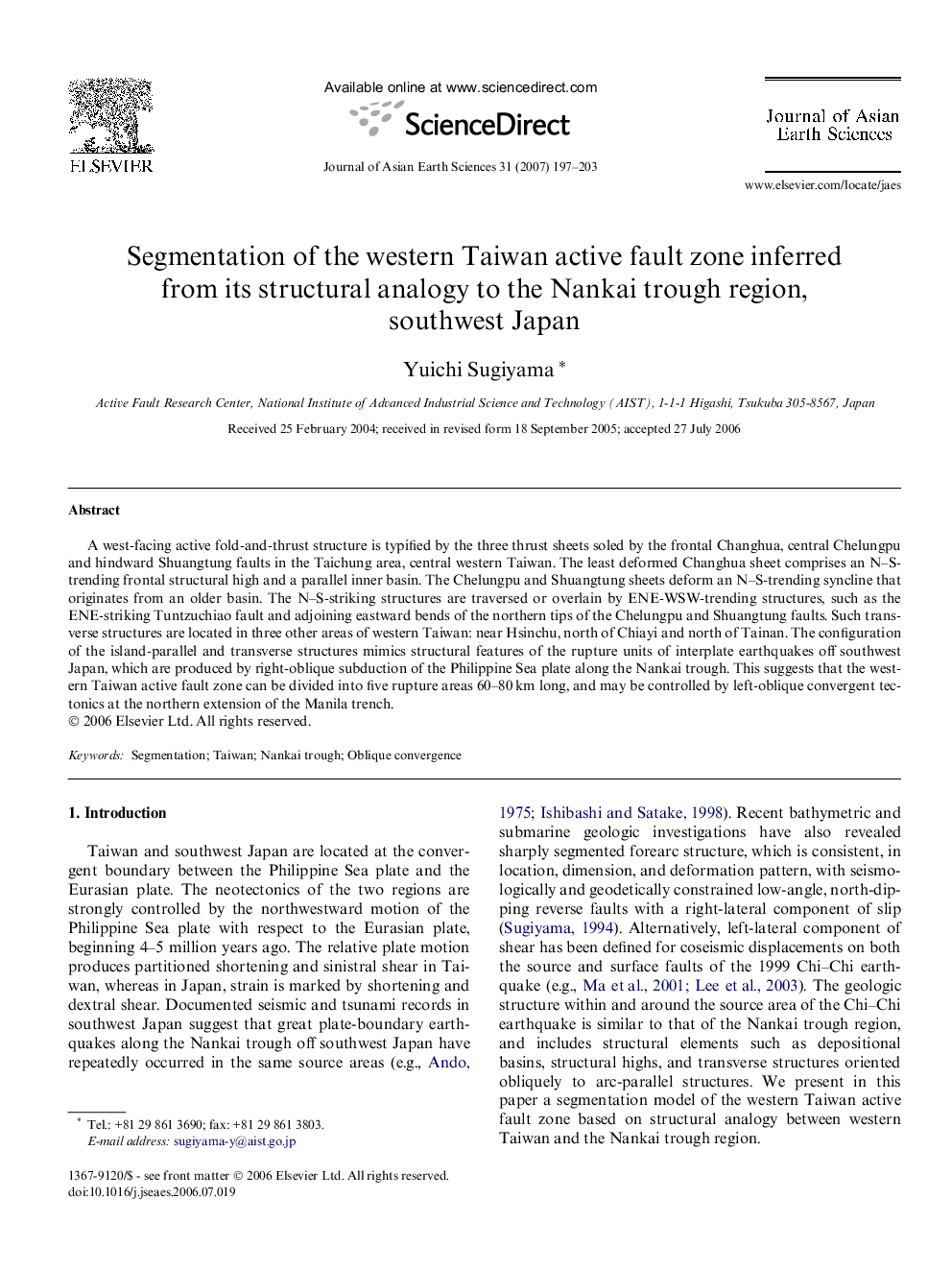| Article ID | Journal | Published Year | Pages | File Type |
|---|---|---|---|---|
| 4732723 | Journal of Asian Earth Sciences | 2007 | 7 Pages |
A west-facing active fold-and-thrust structure is typified by the three thrust sheets soled by the frontal Changhua, central Chelungpu and hindward Shuangtung faults in the Taichung area, central western Taiwan. The least deformed Changhua sheet comprises an N–S-trending frontal structural high and a parallel inner basin. The Chelungpu and Shuangtung sheets deform an N–S-trending syncline that originates from an older basin. The N–S-striking structures are traversed or overlain by ENE-WSW-trending structures, such as the ENE-striking Tuntzuchiao fault and adjoining eastward bends of the northern tips of the Chelungpu and Shuangtung faults. Such transverse structures are located in three other areas of western Taiwan: near Hsinchu, north of Chiayi and north of Tainan. The configuration of the island-parallel and transverse structures mimics structural features of the rupture units of interplate earthquakes off southwest Japan, which are produced by right-oblique subduction of the Philippine Sea plate along the Nankai trough. This suggests that the western Taiwan active fault zone can be divided into five rupture areas 60–80 km long, and may be controlled by left-oblique convergent tectonics at the northern extension of the Manila trench.
